Everyday Mathematics Grade K Answer Key Unit 3 Section 3
Everyday Mathematics Grade K Home Link 3.1 Answers
Sorting a Collection
Family Note
Children love to sort! At school, children sorted blocks by shape and compared the number of blocks in each group. Encourage your child to think of different ways that objects at home can be sorted, such as by color, size, shape, or function. For this activity, help your child find a collection for sorting, such as toy animals or cars, rocks, shells, writing or drawing tools, mixed-shape or mixed-color cereal or pasta, or other items. After sorting, encourage your child to count and to compare the number of items in each group.
Question 1.
Gather a collection of objects.
Sort your objects. (You can sort by, color, size, shape, or another way that is interesting to you.)
When you have finished sorting, count how many objects you have in each group.
- Which group has the most ?
- Which group has the fewest?
- Do any groups have the same number?
- Challenge : How many more are in one group than another?
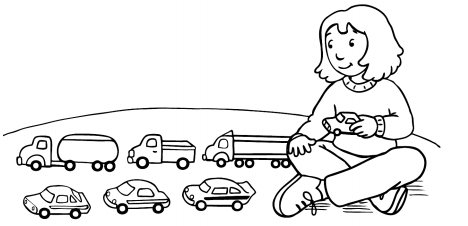
Answer:
Here different shapes, Colors and Size of Triangles , Squares and Circles are represented in the below figure
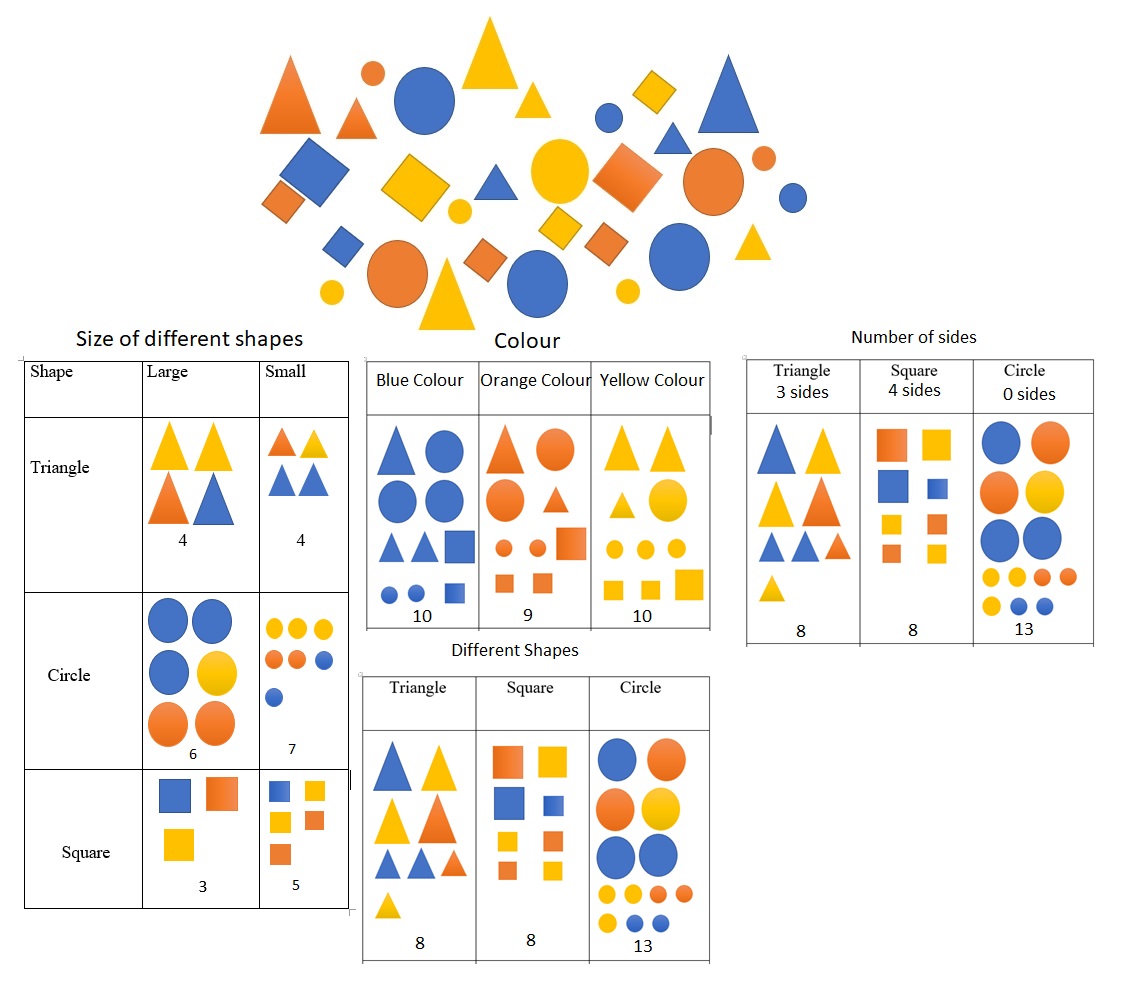
The total Number of shapes = 29.
a. The Most number of group is in Different shapes and Number of sides where number of circle are 13 .
b. The Fewest group is in Size of different shapes where the number of large squares are 3 .
c. Yes, In Size of different shapes group the large size Triangles = Small size triangles .
In Different Color group, the number of Blue color are equal to number of red color .
In Number of sides group the Number of Two sides = Number of four sides
In Different Shapes group the Number of Triangles = Number of Squares .
Everyday Math Grade K Home Link 3.2 Answer Key
Ten-Coin Toss
Family Note
By the end of Kindergarten, children should be able to find number pairs that add to 10, such as 9 and 1, 8 and 2, 7 and 3, and so on. Children are beginning to develop this understanding by playing games with sets of ten and by using ten frames, such as the one below. Do not expect your child to memorize the number pairs at this point. Children will have plenty of practice finding number pairs that add to 10 throughout the year.
Question 1.
Gently toss 10 pennies. Sort the pennies into groups of “heads” and “tails” and put them on the ten frame.
Count the number of heads and the number of tails. You may want to record the numbers you find on the back of this page.
Repeat at least three more times.
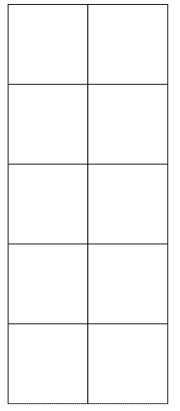
Answer:
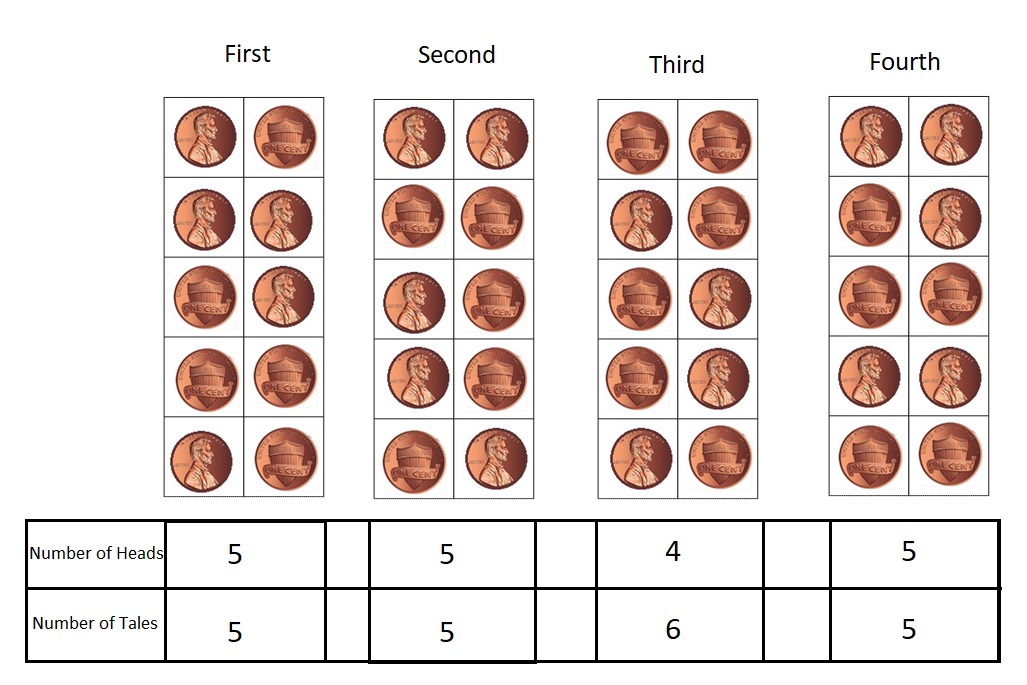
Explanation :
4 times the 10 pennies were tossed and the respective head and tale is written in the given tabular column. then total number of heads and total number of tales are tossed are counted and written below as shown in the above Figure .
Everyday Mathematics Grade K Home Link 3.5 Answers
Longer or Shorter?
Family Note
Your child is learning about length measurement by comparing objects and describing them as longer and shorter than other objects. In Kindergarten we focus on direct comparisons of length to prepare children to use measuring tools later. Help your child line up the end of his or her arm (at the longest finger) with the end of the object being compared. This technique will be helpful later when your child learns to line up objects with the end of a ruler or other measuring tool.
Question 1.
Compare the length of your arm (starting from the tip of your longest finger) to objects at home or outside.
Which objects are shorter than your arm?
Which objects are longer than your arm?
Pretend the picture below is your arm.
Draw one thing you find that is shorter than your arm.
Draw one thing you find that is longer than your arm.
Share your drawings with someone at home.

Answer:
The Objects shorter than my arm are pen, Comb, Mobile , Laptop ,pencils, Spoons and etc .
The objects are longer than my arm are meter scale, cub board , Sword, Train , Bat , Axe and etc .

Crayon is shorter than my arm
Cricket Bat is longer than my arm .
Everyday Math Grade K Home Link 3.6 Answer Key
Simon Says
Family Note
In school, children are practicing using positional language to describe objects in the environment. Playing Simon Says helps your child learn the meaning of these words by providing opportunities to follow and use positional commands.
Question 1.
Play Simon Says with your family. Use positional words such as above, below, next to, in front of, and behind. Take turns being “Simon” (the leader).
Use clues such as these:
- Simon says, put your finger below your chin.
- Simon says, put your foot next to your knee.
- Simon says, shake your hands behind your back.
- Wiggle your fingers above your head. (Don’t follow this command. Simon didn’t say!)
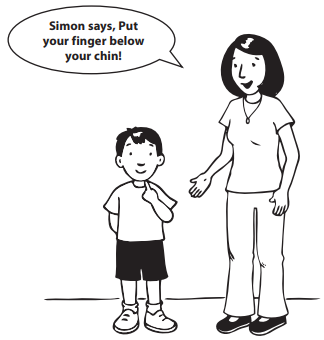
Answer:
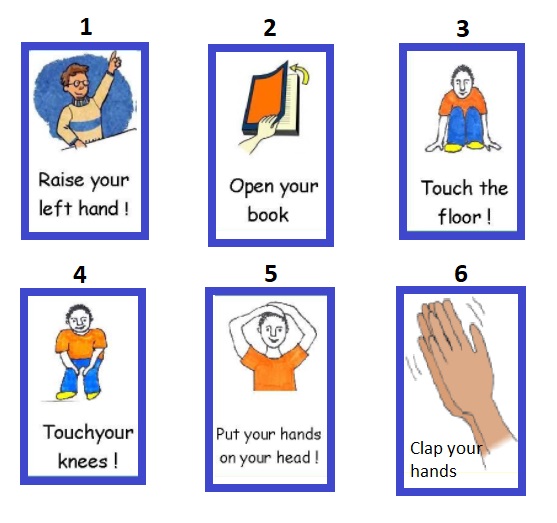
Explanation :
Picture 1 : Simon says Raise your left Hand .
Picture 2 : Simon says Open your Book .
Picture 3 : Simon says Touch the Floor .
Picture 4 : Simon says Touch your Knees .
Picture 5 : Simon says Put your Hands on your Head .
Picture 6 : Simon says Clap your Hands .
This are 6 instructions and all are represented in the above figure .
Everyday Mathematics Grade K Home Link 3.8 Answers
Counting and Writing Numbers
Family Note
At school, your child has been practicing writing the numbers 0–10 to represent sets of objects. Encourage your child to use this new skill by counting items at home and writing numbers to represent his or her findings.
Question 1.
How many of the following things are in your home? Count and write the numbers.
 __________ people
__________ people
 __________ pets
__________ pets
 __________ beds
__________ beds
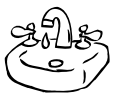 __________ sinks
__________ sinks
Draw a picture of your choice and write the number.
Answer:
 = 9 People
= 9 People
 = 0 pets
= 0 pets
 = 3 beds
= 3 beds
 = 2 sinks .
= 2 sinks .
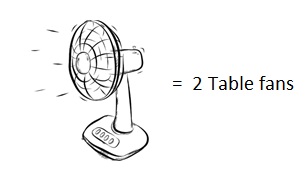
Explanation :
All the respective objects in my home are counted and written .
Everyday Math Grade K Home Link 3.9 Answer Key
Line Up
Family Note
Our class has been learning about the numbers 1–10 and about why their order matters. Connecting numbers to sets and seeing how each number is exactly one more than the number before helps children build important foundations for later arithmetic skills.
Question 1.
Take 1 stuffed animal (or building block or other toy). Cut out the number 1 from a magazine or newspaper or write “1” on a piece of paper. Place the number in front of the toy.
Place a second toy next to the first one. Cut out or write the number that should go in front of the second toy.
Continue until you have a line of 10 toys. Each toy should be labeled with the correct number. Count the toys to check.
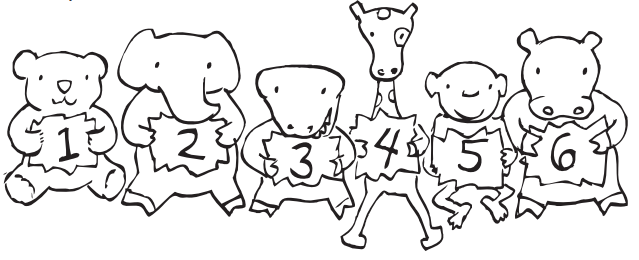
Answer:

Explanation :
10 Animals are placed side by side and a piece of paper is placed infront of them and Numbers from 1 to 10 are written in an order as shown in above figure .
Everyday Mathematics Grade K Home Link 3.10 Answers
Number-Card Games
Family Note
Our class has been learning about numbers and the quantities they represent. Playing games is a fun and effective way to learn about numbers. Many games can be played using a deck of cards. In addition to the games below, your child may also think of other games to play with the cards.
Question 1.
Remove the face cards from a deck of playing cards. Keep the aces and use them to represent the number 1. Use the cards (or your number cards from school) to play these games with a family member or friend.
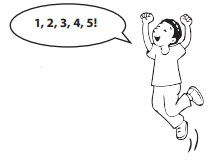
Nimble Numbers
- Put your cards in a pile facedown .
Pick a card. - Choose a movement and do it as many times as the number on the card. For example, if you pick a 5, you may squat or jump 5 times. Count aloud to help you do 1 movement for each number you say.
- Take turns. Choose a new movement each time!
Line Up
- Give each player a set with 1 card of each number.
- Players race to put their cards in order from 1 to 10. You can also play this game by yourself. Ask family member to time how long it takes you to put your cards in order. Try to beat your best time!
Answer :
Nimble Numbers :
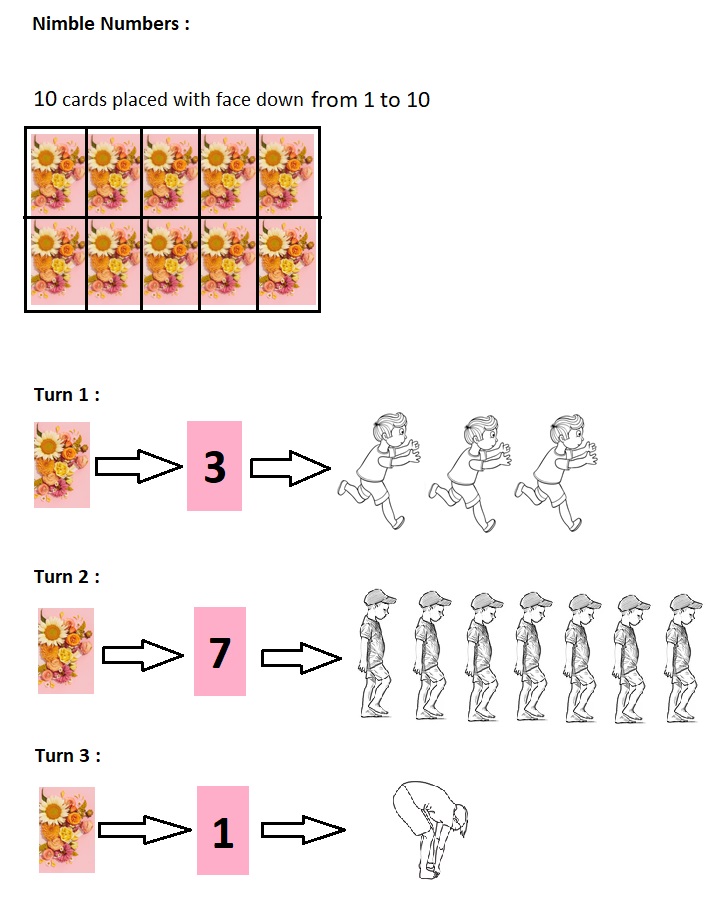
Explanation :
Here, numbers from 1- 10 cards are placed .
In 1st Turn = One card is picked the Number of the Card is 3 so, 3 times the person Runs .
In 2nd Turn = One card is picked the Number of the Card is 7 so, 7 times the person lifts his Right leg .
In 3rd Turn = One card is picked the Number of the Card is 1 so, 1 time the Bends and touches his feet .
and it repeats you can play this by yourself or with friends , family and others every time the movement changes .
Line Up :
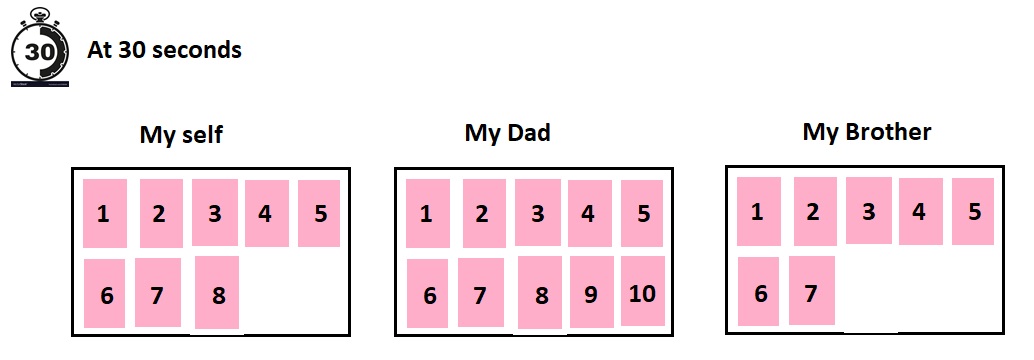
Explanation :
Myself , My Dad and My Brother are playing the game placing the cards from 1 – 10 with Stop watch and checking the Time who does it first and the time limit .
My dad completed playing all the cards in order in 30 seconds and I could complete placing only 8 cards and My brother could place only 7 cards as shown in the above Figure .
Everyday Math Grade K Home Link 3.12 Answer Key
Monster Squeeze
Family Note
Monster Squeeze is a game that reinforces number recognition and the concepts of greater and less.
Directions are provided below, but let your child take the lead in teaching you the game.
Materials Two monsters and a 1–10 number line
Players 2
Object To guess the mystery number
Directions
- Player 1 places one monster at each end of the number line, facing the other. The same player chooses a mystery number between 1 and 10 and writes it on a piece of paper.
- Player 2 guesses a number.
- Player 1 says whether the number guessed is too low or too high and covers the number with a monster. (The left monster covers the number if the guess was too low. The right monster covers the number if the guess was too high.)
Example: If the mystery number is 6 and the guess is 3, the left monster moves up the number line to cover the 3. If the guess is 8, the right monster moves down the number line to cover the 8.
- Players keep guessing and moving the monsters until the mystery number is guessed, or “squeezed,” between the monsters!
Question 1.
Cut out the monsters and the number line. Use them to teach someone to play Monster Squeeze.

Answer:
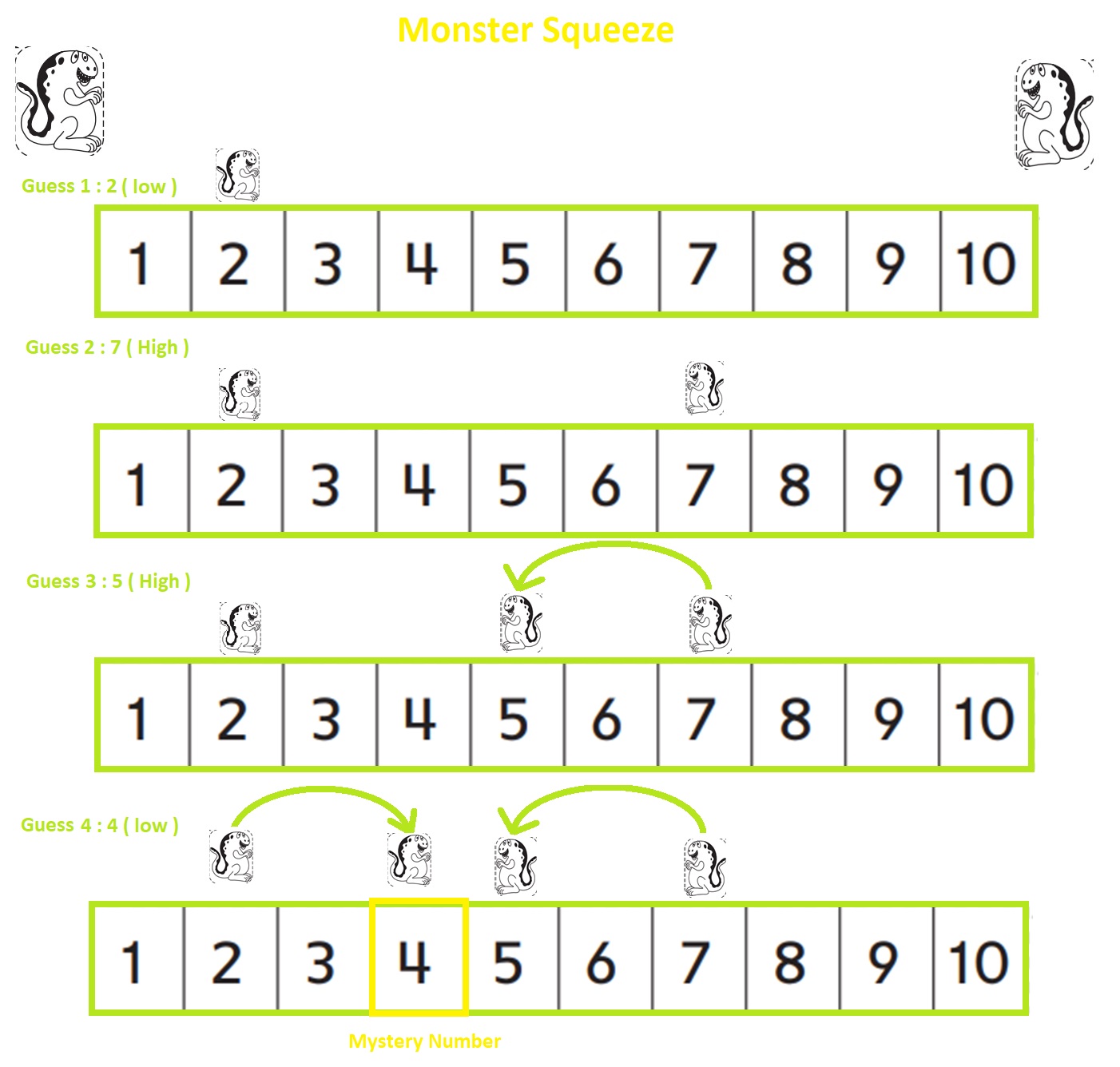
Explanation :
Step 1 :
Both monsters are are placed on the ends that is one monster on left end and other monster on Right end
Step 2 :
Player 1 selects a number from 1 – 10 . Player 2 guesses a number 2 then Player 1 says whether the guess is low or high if the guess is low then left side monster is placed on that guess number or if the guess is high then Right side monster will move and will be placed on that guess number .
In the above one the First Guess made is 2 – low guess so, Left side monster is kept on 2 .
Step 3 :
Guess 2 : 7 – High Guess so , Right side Monster is placed on 7
Step 4 :
Guess 3 : 5 – High Guess so, Right side Monster is moved from 7 to 5 .
Step 5:
Guess 4 : 4 – Mystery number .